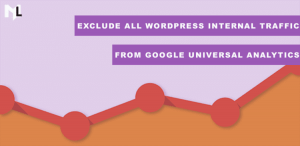Introduction
When it comes to transitioning from Universal Analytics (UA) to Google Analytics 4 (GA4), there’s a common sentiment among users: “I want my GA4 reports to look exactly like they did with Universal Analytics!” We understand the desire for familiarity, but it’s crucial to recognize that GA4 and UA are not identical twins. They are distinct products designed for different purposes and with different data models. While GA4’s data model may be more dependable, the report interface can leave you longing for the simplicity of UA. In this blog post, we’ll dive into the differences between GA4 and UA and explore strategies to bridge the gap between them.
Understanding GA4 and UA Differences
Before we delve into strategies for making GA4 reports resemble UA, it’s essential to understand why they differ. GA4 was built with the future in mind, focusing on event-based analytics and user-centric tracking. In contrast, UA, which has been a staple for years, was initially intended for lead generation and e-commerce, offering more summarized statistics. These foundational differences are why direct comparisons often fall short.
The Preferred Approach: Data Pipeline to BigQuery
We recommend establishing a data pipeline from UA to BigQuery. This approach offers several advantages. It allows you to maintain historical data, incorporate various metrics and dimensions, and perform complex analysis. Additionally, you’ll be well-prepared for the future as GA4 continues to evolve.
Fortunately, GA4 has a native integration with BigQuery. By leveraging BigQuery’s robust capabilities, you can gain a comprehensive understanding of your data and generate reports that align with your expectations. It is important to note that BigQuery’s cost is low for small/medium sized businesses.
Connecting GA4 to BigQuery
Beyond importing UA data into BigQuery, it’s equally important to establish a connection between GA4 and BigQuery. This connection enhances your data analysis capabilities and allows for seamless integration of GA4 data into your reporting workflows. With this connection in place, you can harness the full potential of your GA4 data within a powerful analytics environment.
Mapping Raw Data from GA4 to UA
For those who wish to compute the same metrics they were accustomed to in UA, mapping raw data from GA4 to a designated schema is a viable solution. This involves creating and maintaining a data table that aligns with UA’s structure. By doing so, you retain the ability to generate reports in tools like Looker Studio or any other reporting platform you prefer. This method ensures you have the familiar metrics at your disposal while still benefiting from GA4’s data model.
You can read more about differences on GA4 and UA metrics here.
Leveraging GA4’s Native Capabilities
It’s important to acknowledge that most of the reports you require can be generated within GA4 itself. GA4 is specifically designed for event-based analytics, and its user-centric approach provides valuable insights into user behavior and engagement. While UA excelled in certain areas, GA4 is more versatile and adaptable to evolving digital landscapes.
Aligning Goals with GA4
Ultimately, the key to a successful transition lies in aligning your reporting goals with the capabilities of GA4. Rather than trying to force GA4 into a UA-shaped mold, consider mapping your objectives and exploring how you can achieve the same goals within GA4. It’s an opportunity to embrace a more data-rich and future-ready approach to analytics.
Remember, the key is to leverage GA4’s strengths rather than trying to recreate the past.












